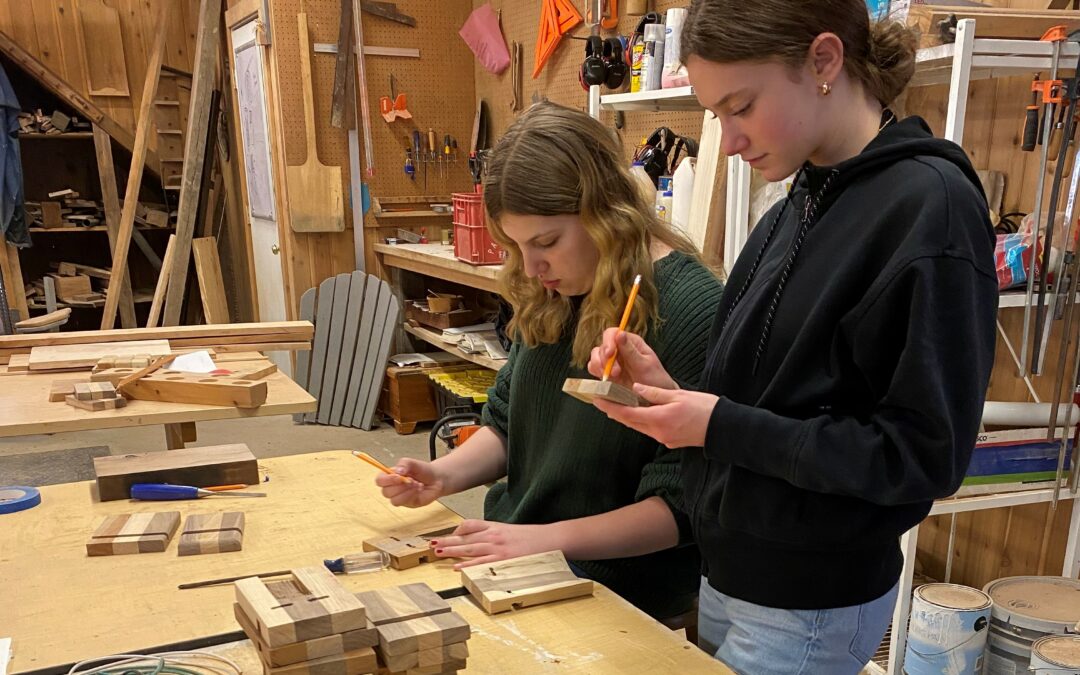Middle School Students Thrive with Hershey’s Integrated Academics
Students Excel with Experiential Learning, Using a Global View, Whole Systems Approach

Nicole Lederle, Middle School Guide
It started in the classroom and then continued in the woodshop, where collaboration met conceptualization, which ultimately led students to a new marketable product.
Nicole Lederle, leading Hershey middle schooler’s Industrial Revolution Humanities class, invited collaboration with Sean Wheeler, Hershey’s Woodshop Manager.
Students were assigned readings about the historical context surrounding production in the late 19th century, including an analysis of quantity vs. quality with cottage industries and factory production, noting related working conditions for minors and adults. Nicole wanted students to have a sensorial experience of a working assembly line. Sean proposed a wooden cell phone amplifier for a case study.
After a thorough safety orientation, students took detailed observation notes in the Program Barn as Sean made a single amplifier as a craftsperson would. The process required seven different power tools and the application of polish to reveal the wood’s rich, cherry color. Students were trained at different workstations in the following class, and in a future class, they will run a real assembly line, including counting how many amplifiers can be produced in the time it took a craftsperson to make just one while working alone.
Additionally, the middle school Humanities class seamlessly linked to the campus Microeconomy program, a cornerstone of Montessori education, which is structured to provide adolescents with purposeful opportunities to participate in and manage small business endeavors in order to grow through the personal experience of economic activity. Students were tasked with conducting a cost analysis.
They learned that the phone amplifier’s raw materials cost about $5 per unit. Each finished cell phone amplifier sells for approximately $30 at market.
After playing music 30% louder than the phone’s unaided speaker, Sean measured a flat board that had been milled from a felled tree on the school’s campus. Each board was long enough to make just over four amplifiers. Stacking the boards, he counted by increments of $120 as students’ eyes widened: “$120, $240, $360, $480, $600…”
As adolescents use their brains and hands, working and growing in responsibility, they gain respect for the value of labor and learn that they, too, are capable of it.
Dr. Maria Montessori advised that educators should not give more to the brain than we give to the hand, and Hershey’s middle school guides are doing an incredible job balancing that, while creating a collaborated, whole systems, experiential approach for their students.


